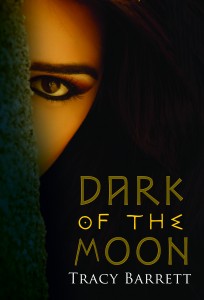by Tracy Barrett (W&M contributor)
Twelve days of Christmas. Twelve months in a year. Twelve inches in a foot. Twelve hours on a clock and 12 x 2 hours in a day. Twelve apostles. Twelve gates to the city. Twelve animals in the Chinese horoscope. Twelve Sanskrit names of God. Twelve disciples of Mohammed and Mithra. Twelve signs of the zodiac. Twelve tribes of Israel.
What is it with the number twelve?
It has such a powerful hold on our collective imagination that the normally meticulous and scarily accurate copy editor of my most recent novel, Dark of the Moon, “corrected” me when I mentioned the thirteen moon-cycles in a year (there are 28 days in a cycle; 13 x 28 = 364). She just couldn’t wrap her mind around the fact that although there are twelve months in a year, there are thirteen moon-cycles.
Thirteen is similarly unlucky in many cultures, to the point where there’s a word for fear of the number thirteen: triskaidekaphobia. Examples of the evil and frightening nature of thirteen are way too numerous to list.
Some would have it that our leeriness of the number thirteen comes from the number of diners at the Last Supper, but it’s much older than that. In fact, it’s likely that the writers of the gospels wrote about thirteen dining companions because that number was already considered unlucky, and possibly, too, because of its ties with the idea of sacrifice, especially of a male god or priest or his stand-in.
Robert Graves, especially in The White Goddess, claimed that the fear of thirteen came from ancient religious rituals in a matriarchal society where a male ruler (or god stand-in, or priest) would be sacrificed in the thirteenth month, often to have his blood sprinkled on the fields as a fertility rite. Naturally, the sacrificee and males in general would tend to have issues with that number! This is part of Graves’s theory of the sacrifice of a substitute taking the place of the intended victim (Abel, Enkidu, Remus, almost Barabbas, etc.)—a theory discredited by many scholars, but enthralling nonetheless.
So I wove those elements into the “last supper” scene of Dark of the Moon. My vision of the female-centered religion of the Minoans when it was in the process of being supplanted by the male-centered Greek religion reflects many of Graves’s theories, including the importance of the numbers twelve and thirteen (plus sacrifice of the king and other elements, many deriving from Leviticus).
And that’s all I’m going to give away about it!
 Tracy Barrett is the author of numerous books for young readers, most recently Dark of the Moon (Harcourt) and The Sherlock Files series (Henry Holt). She lives in Nashville, TN, where she taught Italian, Humanities, and Women’s Studies at Vanderbilt University. Visit her website and her blog.
Tracy Barrett is the author of numerous books for young readers, most recently Dark of the Moon (Harcourt) and The Sherlock Files series (Henry Holt). She lives in Nashville, TN, where she taught Italian, Humanities, and Women’s Studies at Vanderbilt University. Visit her website and her blog.

